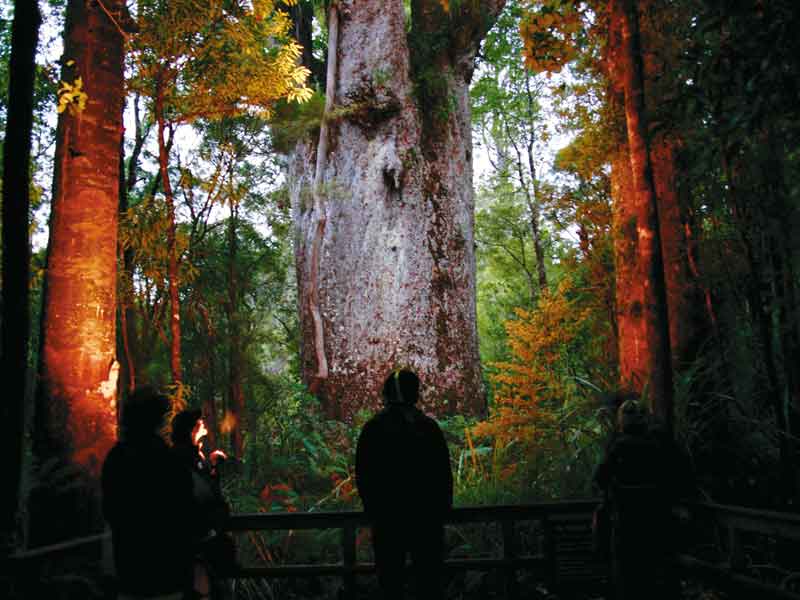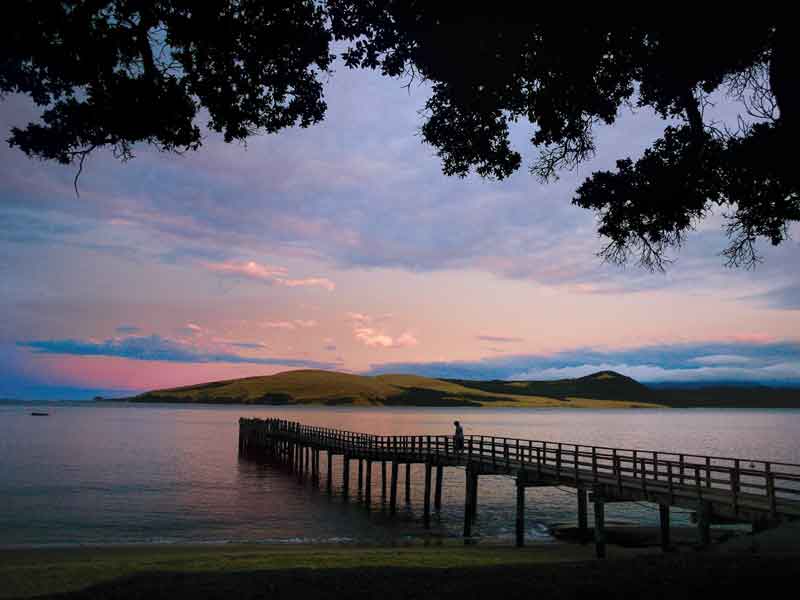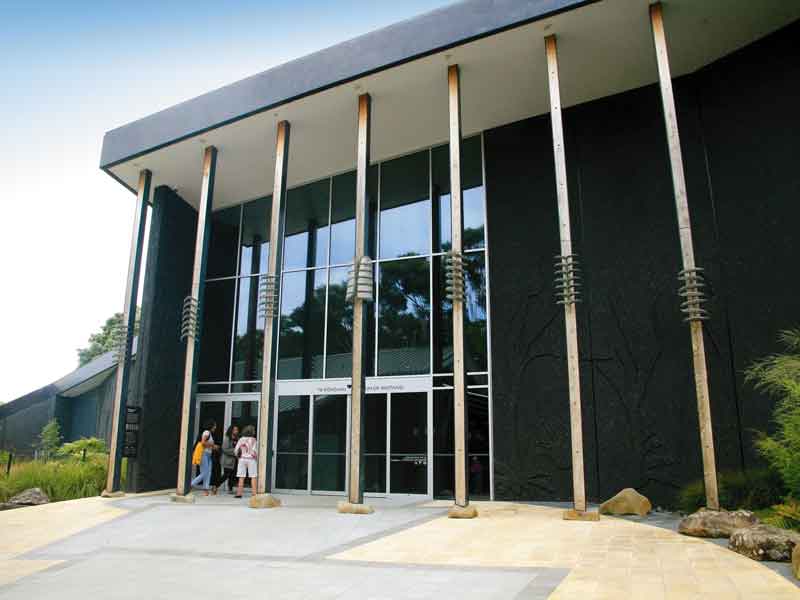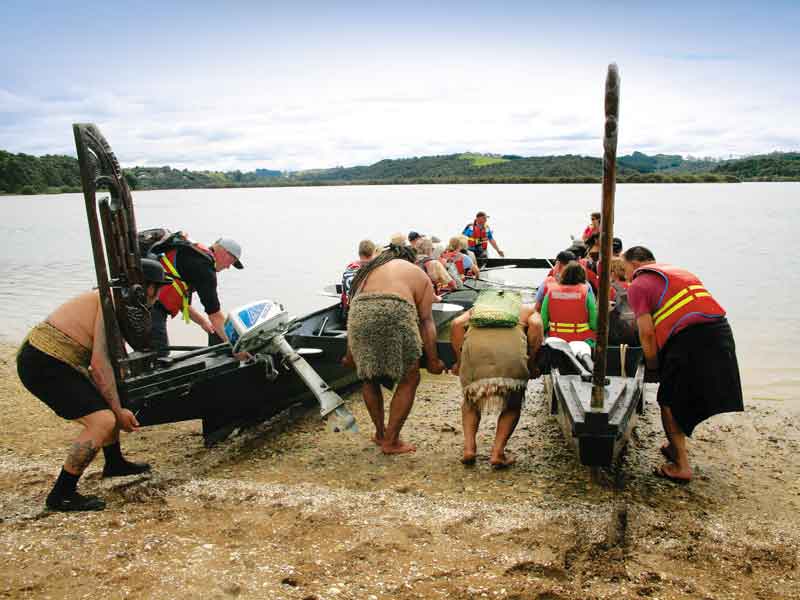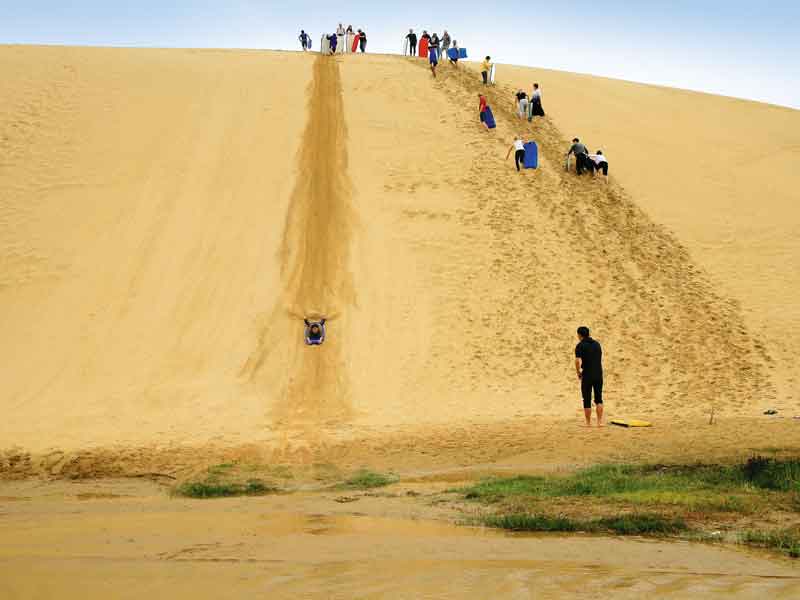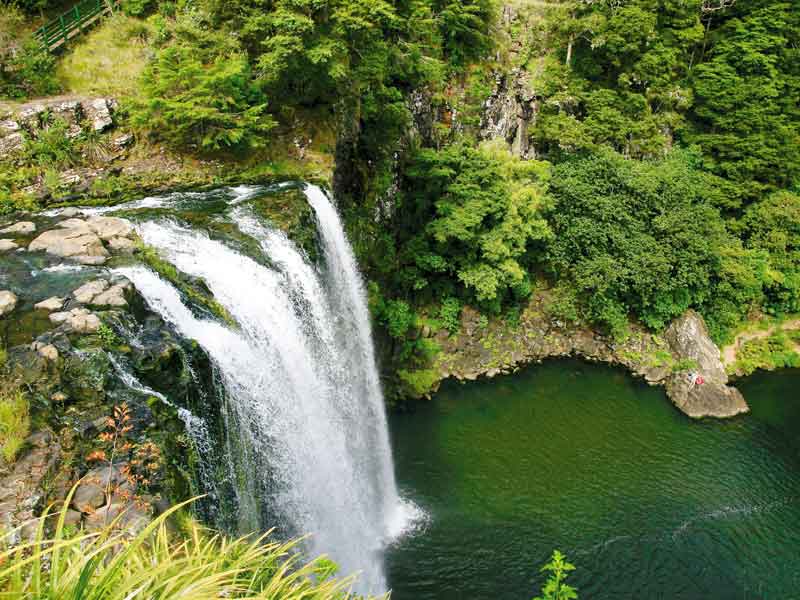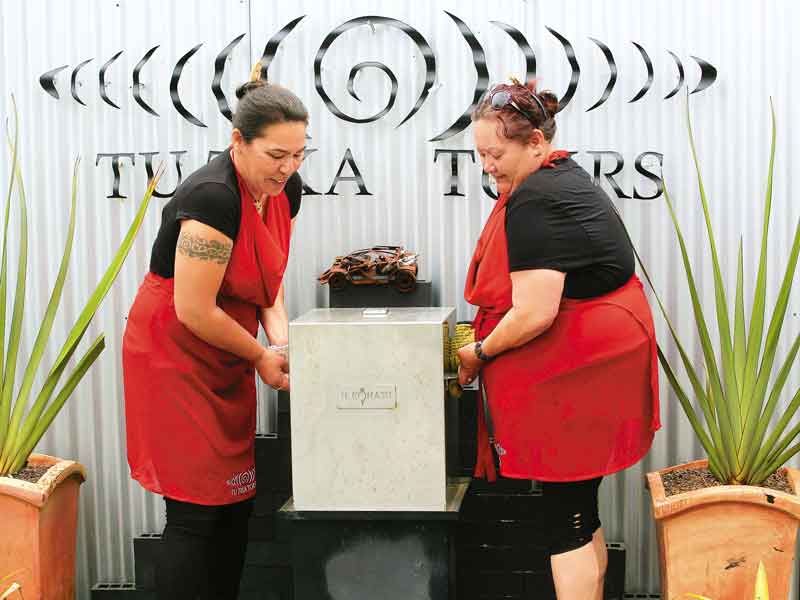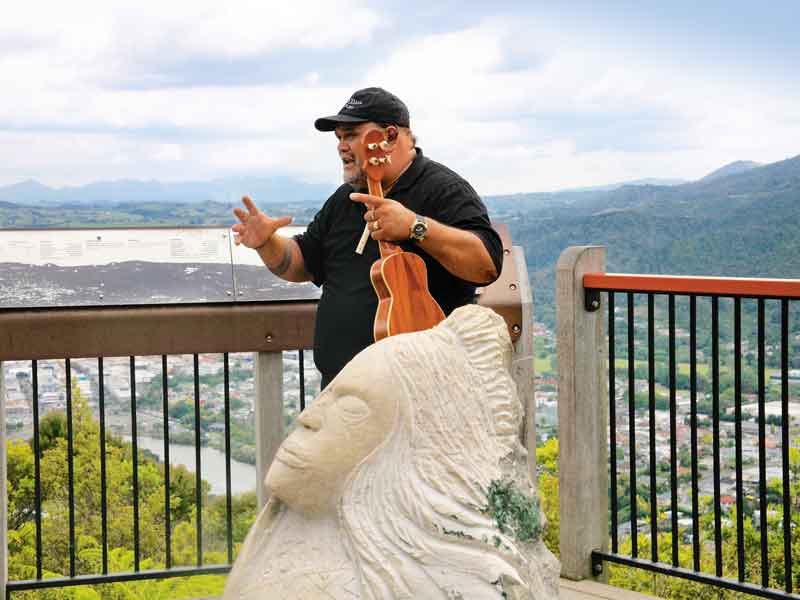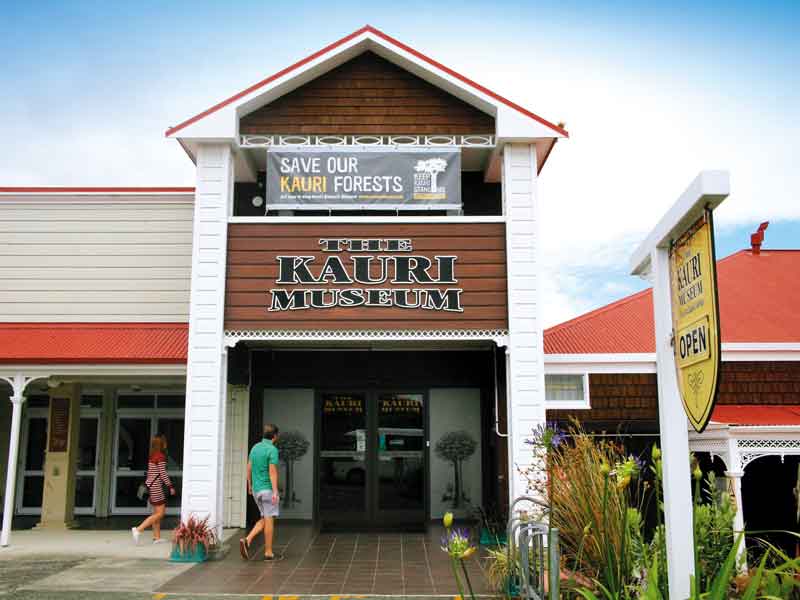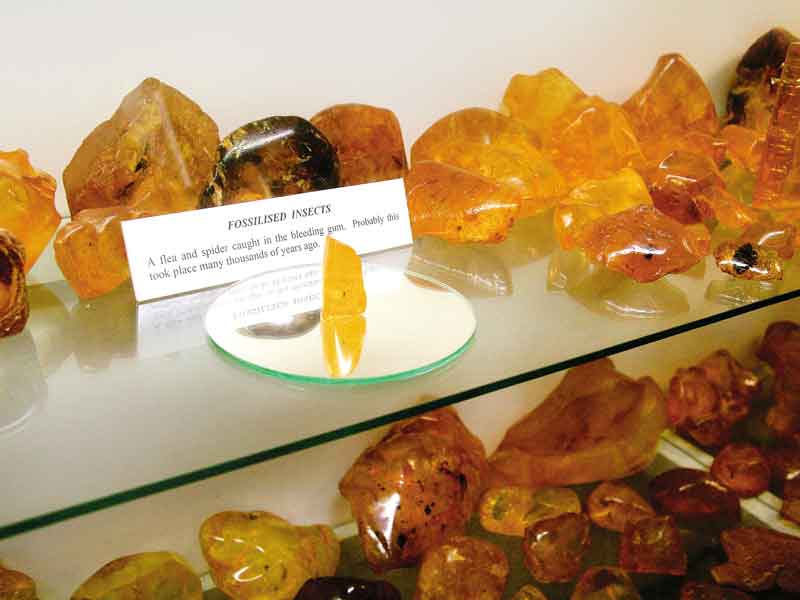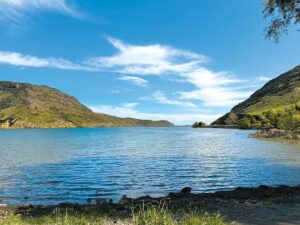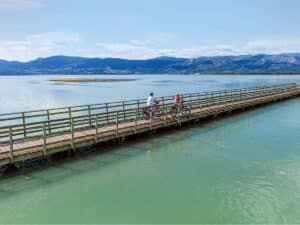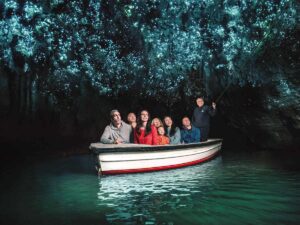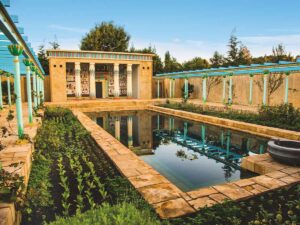As the light began to fade, my companions and I passed through the footwear cleaning station and entered the bush on a well-formed track, part metal, part boardwalk. Our guide, Koro Carman from Footprints Waipoua was leading us to meet the first of two giants—a kauri tree called Te Matua Ngahere, the Father of the Forest.
Almost immediately we were enveloped within the forest, the damp sharp smells of earth and dead foliage underfoot and above us the forest canopy, blocking out the fading light. In the distance, we could hear the faint hoot of a morepork.
We walked in single file, in silence, occasionally stopping as Koro explained some of the cultural aspects of the Waipoua Forest. Then, about 15 minutes later, we turned a corner, and there, in a clearing, standing in splendid isolation was the 3000-year-old kauri tree, Te Matua Ngahere.
Koro broke the silence with a loud and passionate mihi (greeting); the combination of sight and sound sent a shiver up my spine. In that moment, I felt like tangata whenua, belonging to this country and no other. It was spiritual, wondrous, and emotional—a reminder that our own lives are very short. The evening was brought to a fitting climax, as we returned to the entrance, by the unmistakable call of the kiwi. Northland is about big skies and gigantic landscapes. Nowhere is this more apparent than on the way to Cape Reinga.
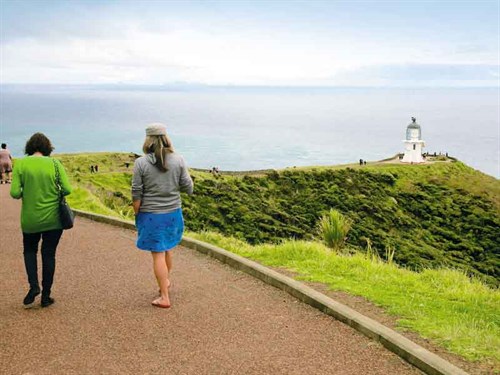
It is a surreal experience to drive at speed along a golden beach for close to 90 miles. Even more surreal to drive in a wet riverbed but this is how you get to the giant Te Paki sand dunes for a spot of sand boarding.
One of the perks of being a photographer is you get spared coming to grief on a fast downhill plunge and getting a mouth full of sand. After lunch, in a secluded picnic area, it was time to join the highway for the drive to the Cape Reinga lighthouse.
One of the many recent improvements is that the road is now sealed all the way to the lighthouse, no more choking blinding dust. A new carpark and entrance to the path leading down to the lighthouse are also new improvements.
To say this area is an epic landscape is an understatement. No houses, telephone poles, television antennae, just complete isolation and silence.
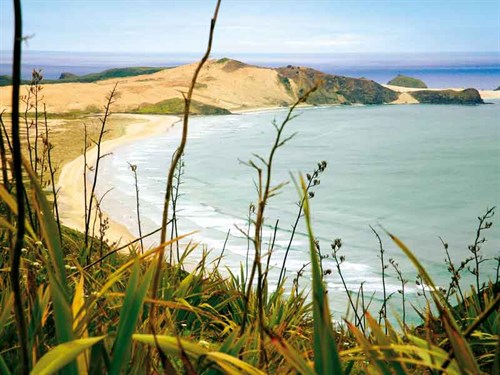
The change in colour between the collision of two great oceans, the ancient pohutukawa tree that has never flowered, the manuka-covered hills in white, pink, and red, and the golden secluded bays and sand dunes that stretch to the horizon define the gigantic and legendary proportions of this landscape at the top of the North Island.
Maori tourism
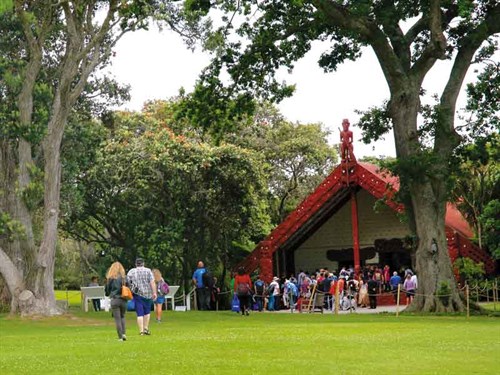
Nga Puhi is New Zealand’s largest tribe and two of its gentle giants of Maori tourism stand out in terms of stature, passion, and mana. Hone Mihaka of Taiamai Tours—who runs a cultural experience on waka, and Mervyn Harding of Tu Tika Tours—who, along with his wife Rangimarie, run a whanau home-based business welcoming small groups to their home for a traditional welcome and hangi meal. I had already spent a day on Hone’s waka experience on a previous occasion, so I opted to spend time with Mervyn and Rangimarie of Tu Tika Tours.
Being the only male in our group of three, it fell on my shoulders to front our whanau for the wero (challenge), replying to the welcome and singing a waiata (song) but we got through it and then sat down to a delicious hangi lunch.
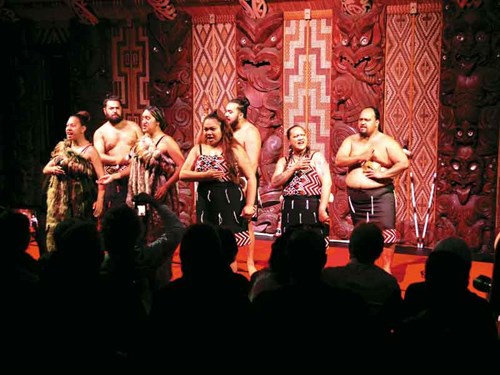
This authentic Maori experience was followed by a tour of well-known Whangarei attractions including the lookout at Mount Parihaka, the Whangarei Falls and Kiwi North a museum with tuatara and kiwi in residence. The tour is perfect for motorhome owners. You can park up at Tu Tika Tours and the Hardings will look after you with a unique and authentic Maori experience at their home, a tour with Maori storytelling, and then return you to your parked motorhome.
No trip to Northland is complete without a visit to the Waitangi Treaty Grounds, a giant venue in every sense of the word. My main focus at the Treaty Grounds was to visit the new Te Kongahu Museum of Waitangi and view the Treaty of Waitangi document relocated from the Treaty House.
Stories of Waitangi are told through world-class exhibitions and multimedia technology, bringing to life the history of Waitangi and its significance to the story of our country’s founding.
Visiting the Kauri Museum

Another museum I visited was the Kauri Museum, centred on the magnificent giants that once covered northern New Zealand. This award-winning museum uses displays and galleries to bring to life Northland’s pioneering days when the great Kauri forests were felled and turned into antique furniture and lumber. The beauty of the Kauri gum is also on show, a part of the museum I especially liked.
For our final activity, we visited Tane Mahuta, a giant kauri in the nearby Waipoua Forest. For me, this tree defines Northland and is a fitting reminder of what was once a forest of giants. The emotions I felt in the region are encapsulated in this one tree, the impermanence of life, the wonder of nature, and our place in it.
A group photo taken in front of Tane Mahuta will always remind me of an exceptional few days spent in the land of the gentle giants.
He aha te mea nui o te ao (what is the most important thing in the world?). He tangata, he tangata, he tangata (it is people, it is people, it is people). Tihei mauri ora! (Listen! My life force is alive!)
Additional information
- Bookings are essential for Taiamai Tours and Tu Tika Tours.
- Sand Safaris offer a relaxed drive along 90 Mile Beach as an alternative to using your own vehicle. They also supply sand sledges at Te Paki sand dunes.
James explored Northland courtesy of Travcom and NZ Maori Tourism

